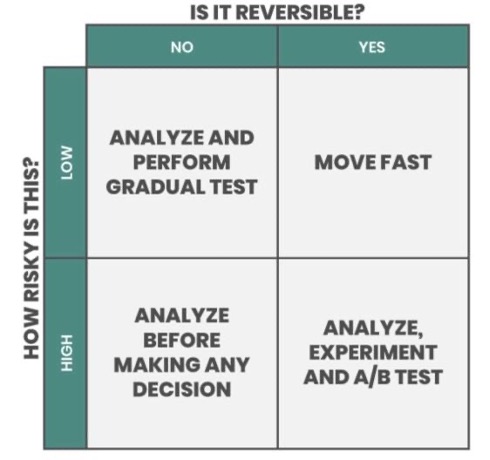How Leaders Can Delegate with Confidence
Delegation is an essential leadership skill, but knowing what to delegate and when can be challenging. The 70% rule suggests that if someone is 70% ready to take on a task, a leader should delegate it. However, another critical framework for delegation is assessing risk and reversibility—a concept that can help leaders determine the depth of delegation with greater confidence.
By using this approach, you can:
- Make smarter delegation choices without jeopardizing business success.
- Empower high-potential employees to develop leadership skills.
- Reduce micromanagement and focus on strategic decision-making.
Let’s explore how risk and reversibility shape effective delegation strategies.
Why Delegation is Crucial for Leadership Development
Many leaders hesitate to delegate because they fear losing control. However, refusing to delegate can stunt leadership development and drive away top talent. Employees looking for growth opportunities may feel undervalued if they are not trusted with decision-making responsibilities.
To become an effective leader, you must shift your mindset:
- Delegation isn’t just about efficiency—it’s about developing the next generation of leaders.
- If you don’t delegate, you limit your team’s potential and your business’s scalability.
So, how can leaders monitor their decisions on the delegation level? By considering the risk and reversibility of each task.
Understanding Risk and Reversibility in Delegation
Amazon’s Jeff Bezos describes decisions as “one-way” or “two-way” doors—a concept that also applies to delegation.
- One-way door decisions: High-risk and difficult to reverse (e.g., acquisitions, rebranding).
- Two-way door decisions: Lower risk and easily reversible (e.g., hiring a contractor, testing new product features).
By mapping tasks on a Risk vs. Reversibility Matrix, leaders can make informed delegation choices.
Delegation Guide Based on Risk & Reversibility
| Category | Example | Delegation Strategy |
| Low Risk & Easily Reversible | Hiring a freelancer, launching a small campaign | Delegate completely |
| Low Risk & Hard to Reverse | Changing a business policy, redesigning a website | Delegate with oversight |
| High Risk & Easy Reversible | Testing a new sales strategy, piloting a product feature | Delegate vautiously |
| High Risk & Hard to Reverse | Acquisitions, major rebranding decisions | Retain leadership oversight |
OR

Practical Examples of Smart Delegation
Easy Delegation: Low Risk & Reversible
A marketing team wants to launch an A/B test for ad creatives. Since the test is low-risk and results can be reversed quickly, a leader should delegate this decision entirely to the marketing manager.
Delegation with Oversight: Low Risk & Hard to Reverse
A company decides to update its branding colors and typography. While low-risk, this change is difficult to undo once rolled out. A leader should allow the design team to take charge but stay involved in the final approval process.
Cautious Delegation: High Risk & Reversible
A sales director wants to experiment with a new pricing model. If it doesn’t work, prices can revert. Since this impacts revenue and client relationships, a leader might approve the plan but set clear evaluation checkpoints.
Retain Leadership Control: High Risk & Hard to Reverse
A company is considering an acquisition. Since this decision is expensive and difficult to reverse, leadership should own the decision-making process while consulting key team members for insights.
Using Delegation as a Development Tool
Delegation isn’t just about efficiency—it’s an opportunity to develop future leaders. Leaders should:
- Encourage employees to take ownership of reversible decisions.
- Support high-potential leaders in making strategic choices.
- Use delegation as a learning opportunity, allowing employees to make mistakes in low-risk scenarios.
By trusting your team, you empower them to grow while freeing yourself to focus on high-level strategy.
Final Thoughts: Smarter Delegation for Stronger Leadership
Effective leaders don’t micromanage—they delegate strategically. By assessing risk and reversibility, you can determine which tasks to delegate, oversee, or retain.
- Low-risk, reversible decisions → Delegate freely.
- High-risk, hard-to-reverse decisions → Retain control.
- Everything in between → Use as a leadership development opportunity.
The goal is to create a sustainable, scalable business where delegation fuels growth and leadership development.
How do you approach delegation in your business?




